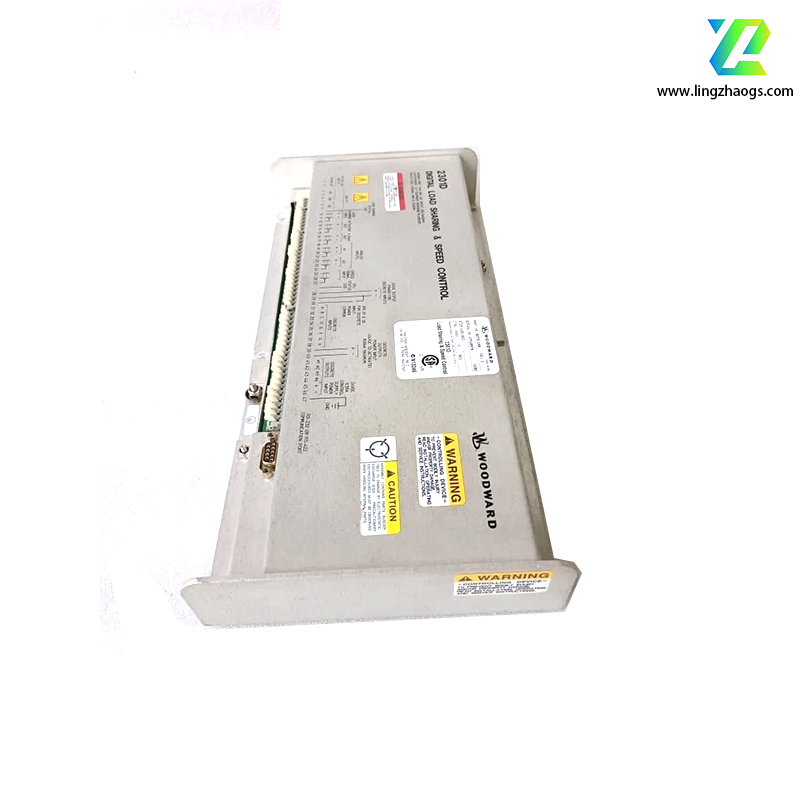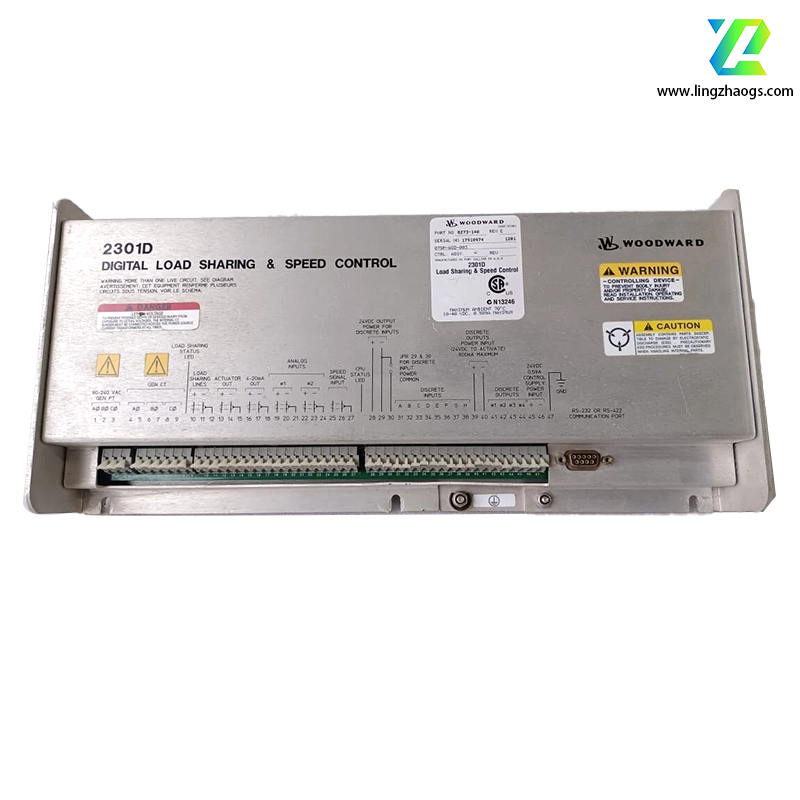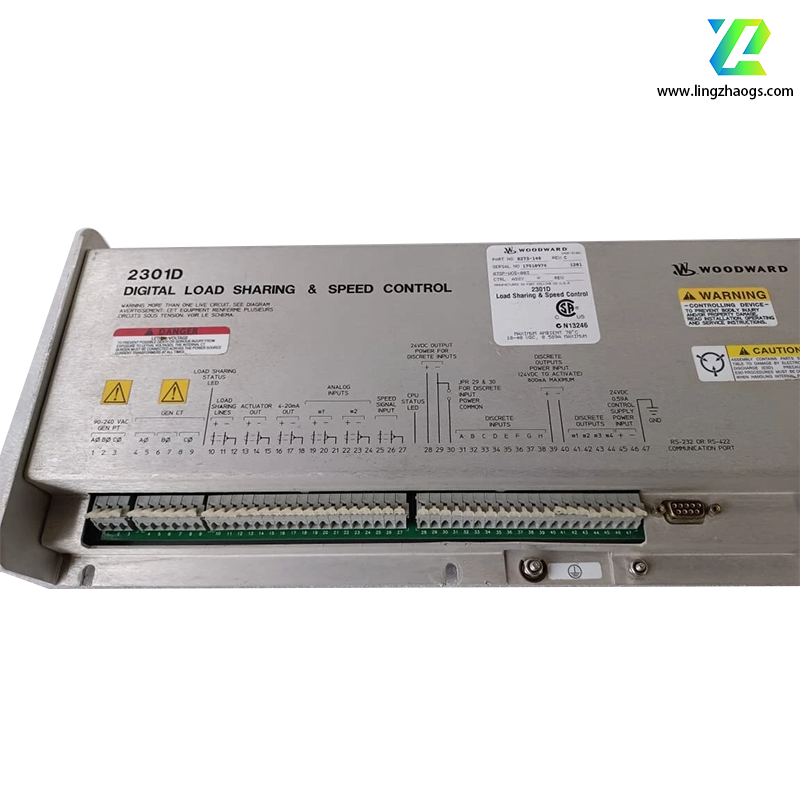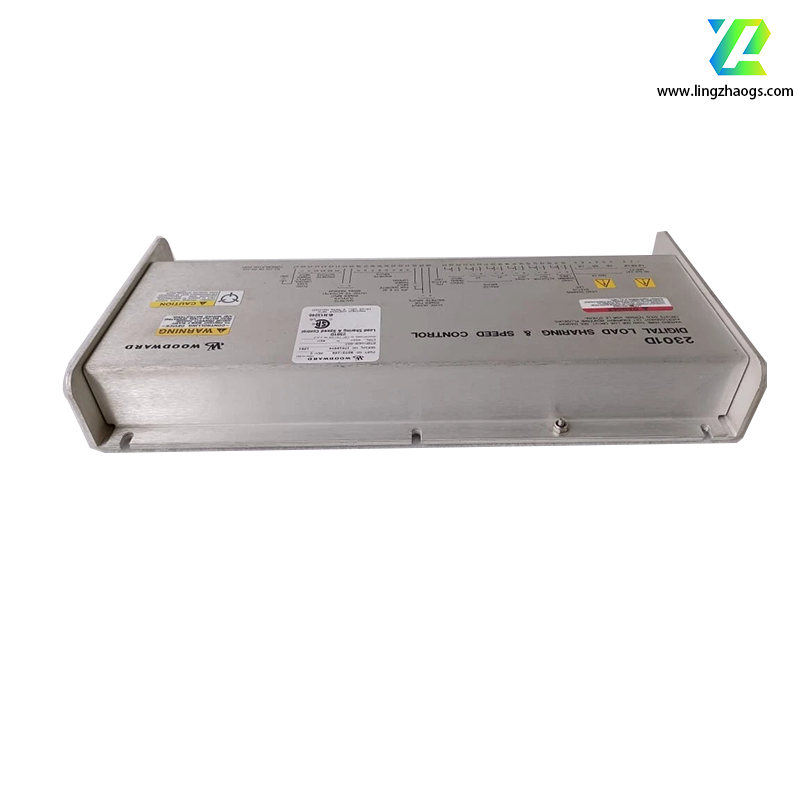The Woodward 8273 - 140 is a digital load sharing and speed control module belonging to the 2301D series, which is designed for precise control of engines and generators. Here is detailed information about it:
- Brand: Woodward
- Model: 8273 - 140
- Type: Digital load sharing and speed control module
- Manufacturer: Woodward
- Part Number: 8273 - 140
- Product Series: 2301D digital load sharing/speed controls
- Power Supply:
- Input Voltage: Usually 24V DC. Some models may have a wider input voltage range, such as 18 - 40V DC, with a maximum current of 0.589A. It can provide a 24V DC output power for discrete input, and JPR 29 & 30 are used as the common for discrete input power. The maximum power input for discrete outputs (to activate) is 800mA.
- Communication Interfaces:
- RS - 232 and RS - 422: Equipped with these ports, it is convenient for data exchange and integration with other devices or systems.
- Modbus Compatibility: Supports Modbus protocol, which can be integrated with Modbus - based systems to enhance communication capabilities.
- Input/Output Configuration:
- Analog Inputs: There are multiple analog inputs, usually with a resolution of 12 - bit ADC. It can receive various physical quantity signals measured by sensors, such as 0 - 10V, 4 - 20mA, etc.
- Analog Outputs: Several analog outputs are provided, and the accuracy can reach ±0.5%. The output signals such as 4 - 20mA are used to control the actions of actuators.
- Relay Outputs: Generally, there are 2 or more relay outputs, and the specifications are often 24VDC, 5A per channel. These relay contact outputs can control the on - off of switching devices.
- Operating Environment:
- Temperature Range: - 40°C to +70°C.
- Humidity Range: Usually 5% - 95% without condensation.
- Control Modes:
- Isochronous Mode: Used for maintaining a constant prime mover speed, applicable to single prime mover operation or the operation of two or more prime movers controlled by Woodward load - sharing control systems on an isolated bus.
- Droop Mode: Applies to speed control as a function of load, suitable for single prime mover operation on an infinite bus or the parallel operation of two or more prime movers.
- Base Load Mode: Provides constant load - level operation against a bus, and the load can be set by a fixed reference, an external analog input, or external contact control of the reference.
- Precise Control: Adopting advanced algorithms and technologies, it can achieve precise control of the engine or turbine speed, with a control accuracy of up to ±1% or even higher, ensuring the stable operation of the system.
- Load Management: It has intelligent load management capabilities, which can dynamically balance the loads of connected devices, optimize energy consumption, and extend the service life of equipment. It also supports soft load transfer, which can smoothly add or remove the generator from the bus.
- Fault Diagnosis and Protection: It has a self - diagnostic function and can record fault data for detailed analysis and troubleshooting. The adaptive speed - sensing filter can adjust to anomalies in gear teeth, torsionals, and slow - speed firing frequency.
- Power Generation: It is used to control the speed of gas turbines, steam turbines, and other power - generation equipment in power plants to ensure the stability and reliability of power output.
- Industrial Automation: In the manufacturing industry, it can precisely control the speed of mechanical equipment to improve production efficiency and product quality.
- Marine and Offshore Engineering: It is applied to the speed control of ship engines to ensure navigation safety and the efficient operation of the power system.
- Oil and Gas: In drilling platforms and oil - gas processing facilities, it controls the speed of key equipment to ensure the safety and stability of the production process.







